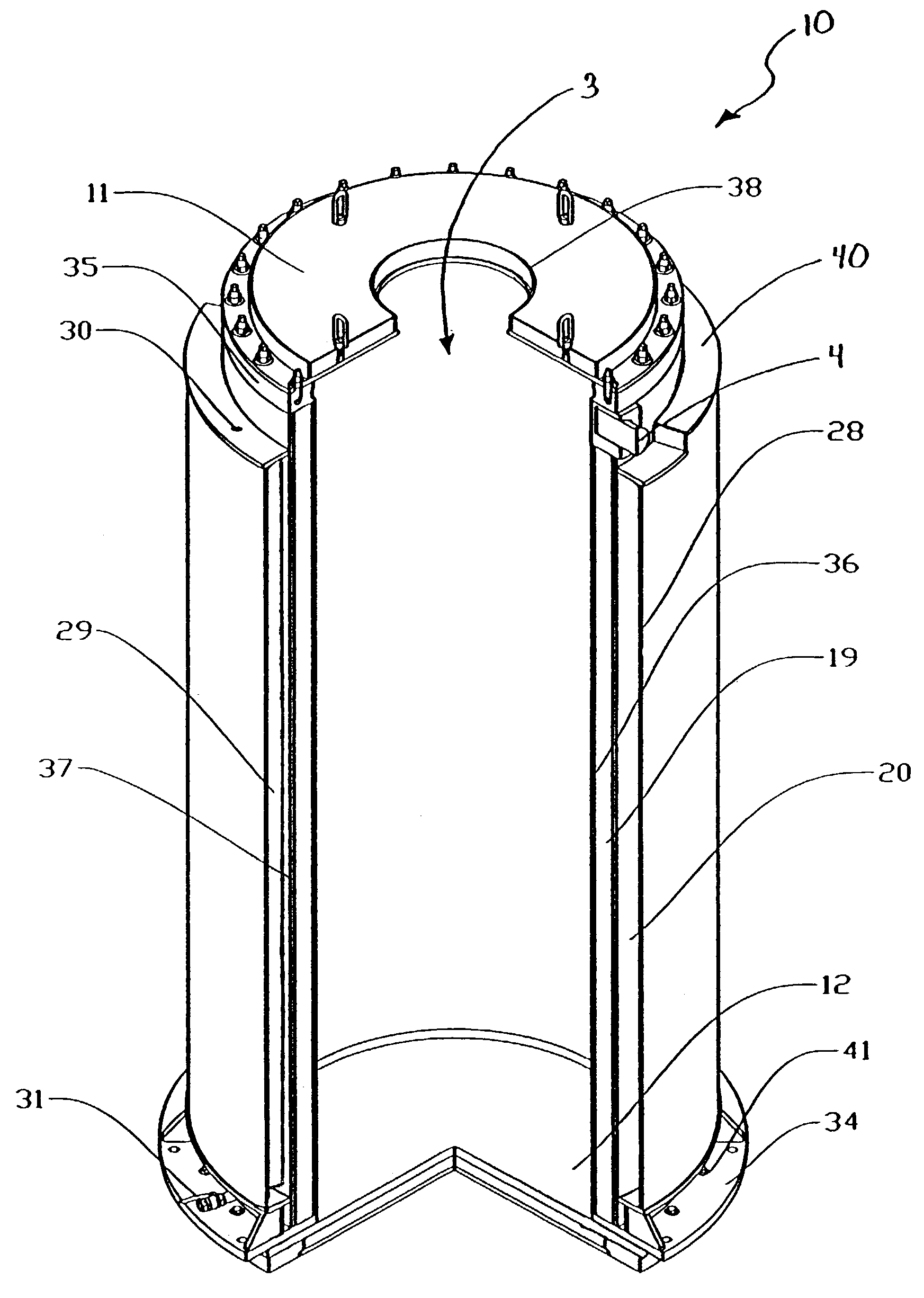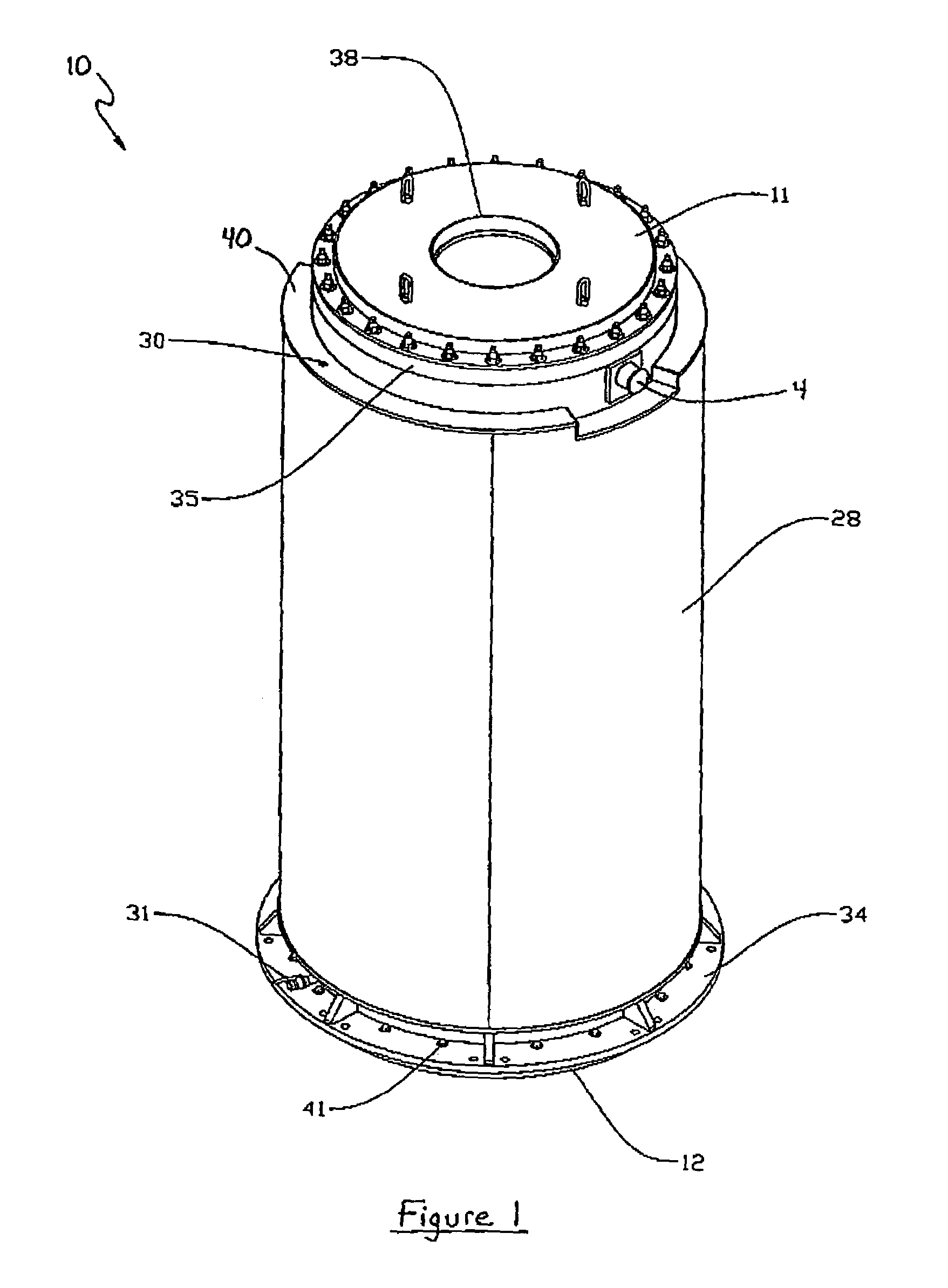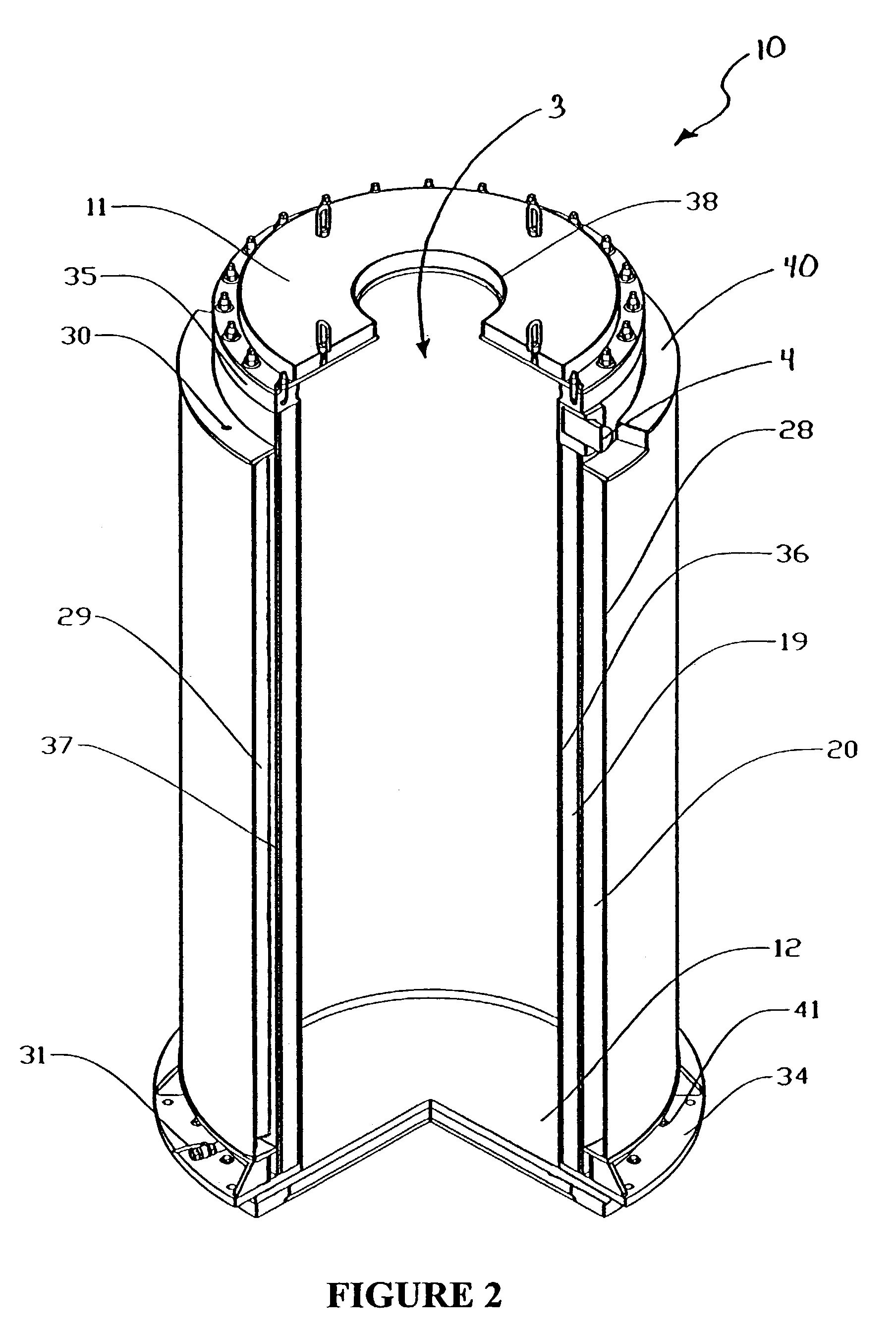Method and apparatus for maximizing radiation shielding during cask transfer procedures
a radiation shielding and cask transfer technology, applied in nuclear engineering, nuclear elements, greenhouse gas reduction, etc., can solve the problems of high radioactivity of spent nuclear fuel, increased radiation shielding costs, and increased radiation shielding costs, and achieves the effect of reducing the radiation shielding of spent nuclear fuel and reducing the radiation exposure of spent nuclear fuel
- Summary
- Abstract
- Description
- Claims
- Application Information
AI Technical Summary
Benefits of technology
Problems solved by technology
Method used
Image
Examples
Embodiment Construction
[0033]FIG. 1 illustrates an embodiment of the apparatus of the present invention, wherein cylindrical transfer cask 10 having a drainable jacket defined by jacket shell 28. A cask lid 11 is removable during the loading step. Cask lid 11 has lid opening 38 for facilitating access to cavity 3 (FIG. 2). Bottom lid 12 is secured to bottom flange 34 by a plurality of bolts 41 that extend through holes in bottom flange 34 and threadily engage bottom lid 12. Handles 4 are provided for attaching the crane.
[0034]Transfer cask 10 and jacket shell 28 have a top and bottom. As used herein throughout, “top” refers to the ends of jacket shell 28 and cask 10 that are closest in proximity to top flange 35, while “bottom” refers to the ends of jacket shell 28 and cask 10 that are closest in proximity to bottom flange 34.
[0035]Referring to FIG. 2, transfer cask 10 comprises cylindrical inner shell 36. Along with bottom lid 12, cylindrical inner shell 36 forms cavity 3 within which a canister of spent...
PUM
 Login to View More
Login to View More Abstract
Description
Claims
Application Information
 Login to View More
Login to View More - R&D
- Intellectual Property
- Life Sciences
- Materials
- Tech Scout
- Unparalleled Data Quality
- Higher Quality Content
- 60% Fewer Hallucinations
Browse by: Latest US Patents, China's latest patents, Technical Efficacy Thesaurus, Application Domain, Technology Topic, Popular Technical Reports.
© 2025 PatSnap. All rights reserved.Legal|Privacy policy|Modern Slavery Act Transparency Statement|Sitemap|About US| Contact US: help@patsnap.com



